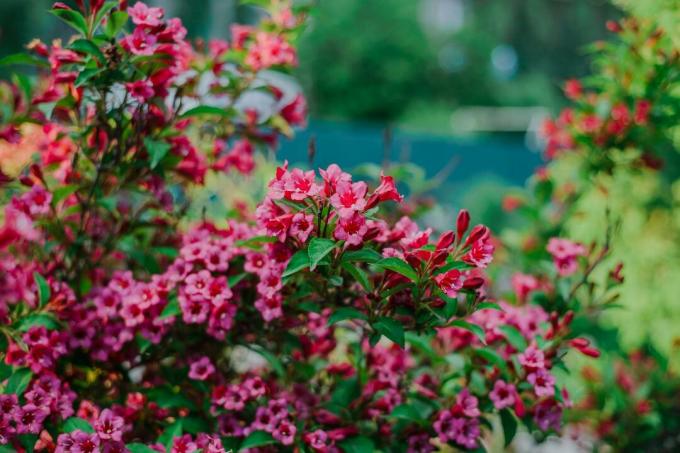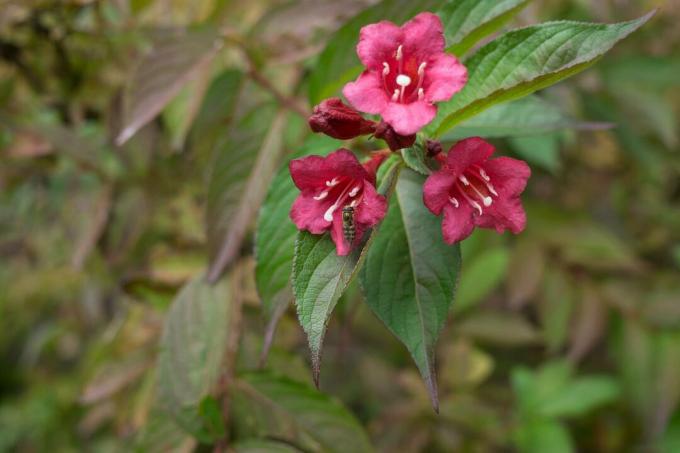So that the weigela can fully develop its beautiful flowers, it should be cut back regularly. We reveal when and how the perfect cut is made.

The weigela (Weigela) is originally from the Far East of Asia. But with its pronounced abundance of flowers in white, pink and red tones on the overhanging branches, it soon won over European gardeners as well. The pruning-tolerant plant found its way to England as early as 1845, from where it easily conquered the gardens of Central Europe. From the ten or so known species, well over a hundred different varieties have developed over time, with something for every taste. To ensure that your weigela blooms lush every year, we have summarized the most important tips for weigela pruning here.
Cutting Weigela: The perfect time
When is the right time to trim the weigela depends a bit on the purpose. Old and withered wood should primarily be cut at the end of February. Weigela plants that have been neglected for many years can even be radically rejuvenated at this time and cut back to short stumps. The shrubs are capable of regenerating from basal adventitious buds. For rejuvenation, choose a frost-free and preferably cloudy day to prevent frost and sun damage to the interfaces.
In summer, on the other hand, only minor interventions are possible, because weigela provide valuable habitats for a myriad of animal species. For this reason, the Federal Nature Conservation Act prohibits felling or pruning of trees between March and September. At this time, therefore, only a restrained topiary should be made, if you wish. The right time for this is right after flowering, i.e. around the end of June. This cut can help your weigela to be more compact, but it is not essential.

How often do you have to cut back Weigelia?
In principle, the weigela does not have to be cut back. As a so-called mesotonic shrub, it grows less in height and more in width. It reaches a height of about two meters and a width of between two and three meters. However, a pruning counteracts the balding and supports increased flowering. Regular pruning also keeps the weigela compact.
A rejuvenation cut is therefore recommended about every two years in late winter. The topiary after flowering can be done every year.
How to cut the weigela
Before pruning the weigela - and also other plants - you should first pay special attention to your tool. This should be sharp in order to be able to produce smooth cutting edges. In this way, the plant is not injured unnecessarily and fungi and other pathogens have less chance of penetrating the wounds. Of course, a certain level of hygiene is also important. Secateurs and saws should therefore be clean. Especially if you have previously cut diseased trees, it can be worth cleaning the tools beforehand. Another measure to ensure that the cuts do not become an entry point for harmful organisms is a sloping cutting edge. So no water stays on it and the wounds dry well after every rain.

Rejuvenation pruning in the weigela
First, cut off any withered branches of your weigela right at the base, as low as possible. Even dead branches can be cut back to the next fork. Since old wood is less prone to flowering than young, it is also a good idea to remove old branches. Therefore, leave all one to five-year-old shoots and only remove the old shoots. Since the shrub flowers on the perennial shoots in May, a radical pruning would lead to the failure of the flower this year.
Topiary at the weigela
A delicate topiary after the shrub has finished blooming at the end of June can contribute to a more compact growth. To achieve this, you can cut back the faded shoots to the next branch fork or the next dormant bud. The reblooming in autumn is not endangered, because this takes place on this year's wood.



